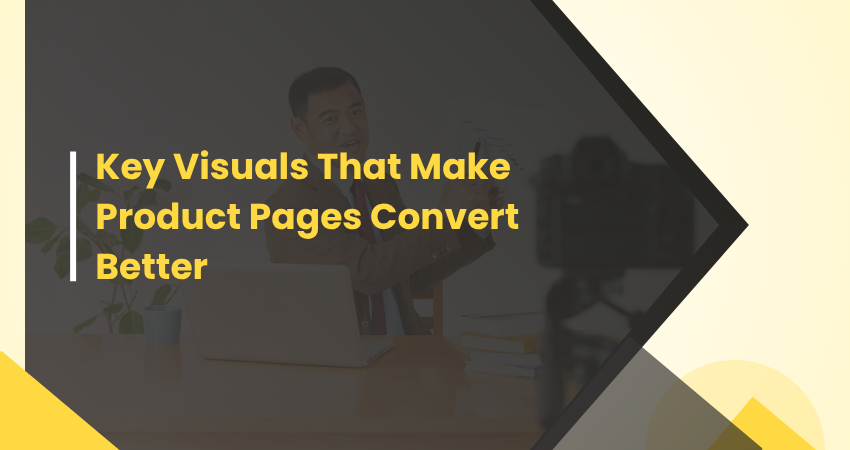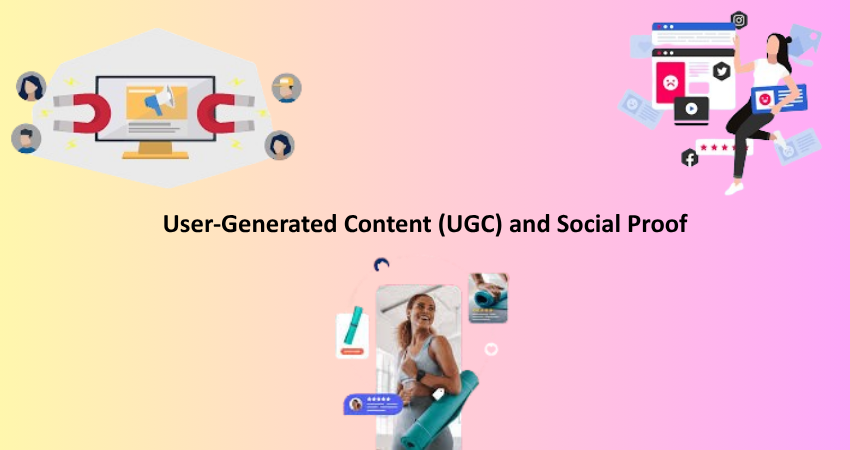
Introduction
Product pages have a vital role in turning visitors into customers in a highly competitive arena of eCommerce. While convincing copy and an alluring call to action (CTA) are fundamental components, visuals tend to have the strongest impact. All that animation, images, videos, infographics, and interactive media combine very well to show products under the best light possible, and they greatly affect the purchasing decisions people will make. Studies show that after watching videos about the product, consumers become 85% more likely to purchase, while high-res images can improve conversion by up to 30%. In light of the above, this article follows up with a presentation of visual elements that are most effective for high-performing product pages and for converting visitors into buying customers.
Outside the shallow idea of beauty, visuals are excellent programs for narration that accord trust and eliminate uncertainty. Where the shopper is unable to engage in a physical interaction with a product, additional visuals can fulfill that role by being distinct on size, texture, functionality, and real-world use. For example, lifestyle images can offer customers different perspectives to contemplate product ownership, while 360-degree views can dispel all concerns about the product’s design and quality. Meanwhile, user-generated content, that is, images and videos from customers, builds social proof and lends credibility to the element of authenticity. With due regard for presentation of these visuals, the eCommerce business can form immersive product pages that engage effectively in overcoming doubts in their customers and encouraging conversions.
High-Quality Product Images
The Importance of Professional Photography
High-resolution product photos shot by professionals are imperative for any successful eCommerce store. Blurry, dim-lit, pixelated photos can extremely dissuade potential buyers since they signal low quality and lack of attention to detail. Thus, good investment into professional photography will ensure that the products will earn the best possible representation of features, textures, and colors. For example, fashion managers will use crisp and bright images portraying the fabrics in clear detail such as stitching and fit; electronics companies will need more high-definition shots that showcase ports, buttons, and screen clarity instead. The consistency in image style- be it white backgrounds for a clean look per se or lifestyle shots for context- would also increase perceived professionalism and trustability of the brand.
Another important part is optimizing images for fast loading times. Large images that are not optimized will slow down the page speed, giving a bad user experience and lower SEO ranking. Using WebP for image format, compressing the file but keeping quality intact, and lazy loading images can get a fast load while keeping clarity for the visuals. Besides, multiple angles such as front, back, side, and close-up views can really help customers reduce returns from mismatched expectations. Retailers like Amazon and Apple conquer this by providing zoom-in and alternate views so that shoppers can examine products comprehensively before their purchase.
Using Multiple Angles and Zoom Functionality
It is generally understood that availability of varied angles would create more reduction on the buyer’s uncertainty while enhancing his or her desire to buy. Very few photos taken from the front would be sufficient; customers would like to see back, sides, and the tiniest details before they make a firm commitment. A shoe store, for example, should put a picture of the sole, inner lining, and heel from thick perspectives, while a furniture store must provide dimension views, assembly points, and material textures. Interactive zoom functionality takes this further to allow customers to examine fine details, be it the stitching of a handbag or the grain of wood in a table. Being transparent in this way reduces returns and creates trust.
Advanced eCommerce platforms like Shopify and WooCommerce support plugins that enable 360-degree product spins, offering an even more immersive experience. Particularly for greatly treasured high ticket items like electronics, jewelry, and home appliances, such an assurance comes into play for the end user. Besides, a hover-to-zoom for desktop and a pinch-to-zoom option for mobile devices can complete the great experience. Retailers that incorporate these features have been witnessing more conversion rates and fewer cart abandonments since customers feel they have ample information to make decisions on what they purchase.
Product Videos and Demonstrations

The Power of Video in eCommerce
Yes, the truth is videos are the strongest conversion tool for a product page. While still images can stop a person from going to a product page, videos actually show the functioning or features, and deliver the brand personality in just a few seconds. Studies show that adding a video on a product page enhances the profits by around 80% because of dynamic demonstration to show benefits that one gets from the product. Such as a short clip showing a vegetable chopper kitchen gadget and how easy and time-saving one can use this machine. Fashion retailers use a similar example while flowing in a dress or how a jacket fits while in motion.
An additional benefit from video content is the degree to which video contents can cut down on product returns. Many shoppers return products that do not meet their expectations; therefore, a high-quality video can elucidate minute aspects such as size, material, and function. Unboxing videos work wonders here, as they replicate the sensory experience of receiving the product in real life. Brands such as Apple and Dyson use premium-quality product videos to showcase precision engineering and user experience, reinforcing that premium positioning. Videos should be embedded directly on the product page instead of linking to them via an external platform, keeping customers engaged, and minimizing bounce rates and conversion potential even further.
Types of Effective Product Videos
Each product video serves a different purpose, and using various videos maximizes results. For example, an explainer video might be ideal for demonstrating features and usage for complex products in a simple manner. This could be of use for the tech brand selling wireless earbuds with a 30-second explainer that showcases pairing, battery power, and touch control. Another powerful format is comparison videos, especially for brands with multiple variants. This way, they can compare the differences between models visually rather than with mere text for a consumer to make their own decision.
Trust stands to gain from user-generated video reviews and testimonials. There cannot be any more obvious social proof than that gained from witnessing real customers unpack, review and use a product, which polished advertisements from the brand would never ever replicate. Here, one would encourage buyers to talk about their experiences as such created a library of UGC that could be used on product pages, either through incentives or hashtag campaigns. Live demos-whether recorded or streamed-allow for asking immediate questions by potential buyers and receiving answers on the other end, which adds to consumer trust in addition to all these. This is perfectly in line with the Amazon Live and Facebook Shops format to reach and sustain the audience, further enhancing the weight of interactive video content in modern trade.
Interactive Visuals (360° Views, AR, and Configurators)
Enhancing Engagement with 360° Spin Images
Interactive 360° product views allow rotating and inspecting products by customers from every angle and bring online shopping very close to an in-store experience. This feature contributes particularly to products where detail and craftsmanship matter—for instance: watches, shoes, and electronics. When the user is dragging the image, he can check for any engraving or texture or finish and erase all his doubts regarding its quality. A recent study shows that the page that displays the object in a 360-degree view has a sale conversion rate up to 27 percent higher than that of the static-image page because of the broad inspection opportunity accorded the clients.
360° spinning is an increasingly easy thing to deploy via the use of plugins and SaaS-tools such as Cloudinary and Spin Studio. These solutions automate image capture and rendering, making them feasible for small businesses. This feature for high-ticket products like jewelry or furniture can tip the scales from cart merit to abandonment. Hotspot annotations can also be used to enhance interactivity—clickable markers that reveal product details. For example, the 360° view of a backpack could highlight features such as hidden pockets, water-resistant zippers, and laptop compartments, thus educating shoppers as they explore.
Augmented Reality (AR) for Virtual Try-Ons
In augmented reality, e-commerce brings this virtual experience of “try-before-you-buy” to fruition. It allows beauty brands such as Sephora and L’Oréal to try on make-up through AR-powered filters. Companies like IKEA enable users to place their 3-D models of sofas and tables within reach using the cameras on their smartphones. This technology has reduced quite much their hesitations regarding products; shoppers can easily visualize how something will actually look or fit in reality. Reports thus point out that such experiences can decrease returns by 40% and increase conversion rates by 20%. All of this makes its investment in such technology worthwhile to innovative brands.
Web-based AR is now available on many of the platforms, thus giving rise to the misconception that creating custom apps for AR implementations is mandatory. As an example, merchants can upload 3D models to see them on iPhone and iPads using Shopify’s AR Quick Look feature. Furthermore, for example, eyeglass companies like Warby Parker can employ augmented reality by overlaying the glasses onto a person’s face, thereby enabling them to discover an ideal style. The better the camera resolution and the effectiveness of AR tools, the more common will be such an idea for product pages, moving closer to real shopping experience. Those who adopt this sooner would have a better chance of competing by giving a unique futuristic style to the shopping experience, which delights customers and boosts sales.
User-Generated Content (UGC) and Social Proof

Leveraging Customer Photos and Reviews
User-generated content (UGC) is one of the most trusted forms of social proof, with consumers considering 85% of it to be more persuasive than brand-created visuals. Showing real customer images on the product page-whether through a gallery or an integrated Instagram feed-is important as it demonstrates how the items actually look in real-world usage and not just in a professional photo shoot. For instance, a fashion retailer can show images of customers wearing the same dress in different body types and settings to offer true styling inspiration. Transparency builds trust and eliminates skepticism as shoppers see versioned product representations.
Post-purchase emails requesting images for sharing, hashtag campaigns, or loyalty programs rewarding user-generated content submissions are some ways a brand could encourage UGC. Brands such as Glossier and Gymshark thrive in this respect, reposting user content on their websites and social media, thereby fostering community engagement. Additionally, implementing customer review platforms like Yotpo or Judge.me gives the shopper the capability to filter for reviews that contain photos and videos, thus further establishing credibility. After all, it is human nature to feel encouraged to buy when seeing the honest enjoyment of a product by someone else.
Video Testimonials and Unboxing Content
Providing vibrant social proof, video testimonials and unboxing videos go far beyond static images; they overshadow any textual reviews. Witnessing a customer passionately tell how their product solved a problem surely constitutes a great deal of persuasion. On the other hand, unboxing videos provide first impressions that are totally unrehearsed: the quality of the packaging, what the customer sees inside, and how they feel about it. Brands can curate this kind of video from social media or partner with micro-influencers for making authentic, relatable content.
Displaying UGC specifically on the product page-for example, under the Kustomer Stories section-adds weight to the credibility picture. A skincare brand might showcase a video compilation of before-and-after clips from customers; an electronics brand, might feature unboxings that show reactions to premium packaging. Brands can use tools like Bazaarvoice or Loox to collect and display video reviews and automate the workflow for scaling up. By using UGC, brands richen product pages and put life into the concept of community whereby more and more customers would want to share their experiences and generate social proof.
Conclusion
Visuals play an important role on high-converting product pages to establish customer opinion and impulse purchase decisions. High-quality images, lifestyle photography, videos, and AR experiences all create doubt-distancing credibility in their own right. With the inclusion of diverse models, user-generated content-sharing, and scientific comparisons of the product credence grows, leaving customers feeling confident before pressing “Buy Now.”
It’s constantly changing, and those brands investing in cutting-edge graphics—a presentation package that might include everything from 360° spins and augmented reality to dynamic infographics—will be the ones that outshine others in a crowded marketplace. These companies will be the first to create immersive, engaging shopping experiences by continuously testing and optimizing product page visuals that turn casual browsers into lifelong fans. Future online retail will depend on integrating good aesthetics and functionality, placing visuals in the “have to have” category for the success of eCommerce sites.